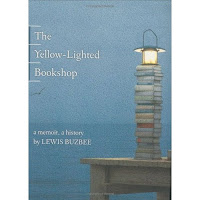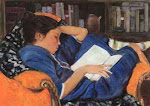
Finally, an easy-to-read book about books, written for those who love to read books.
THE YELLOW-LIGHTED BOOKSHOP:
A MEMOIR, A HISTORY
By Lewis Buzbee
Publisher: Graywold Press, 216 pages
(ISBN: 978-1555974503)
MOST avid readers love nosing around other readers' book collections. And it's always great fun having a private snigger at a fellow bookworm's (so he says) reading preferences ... while looking suitably impressed of course! Readers love books like The Complete Polysyllabic Spree by Nick Hornby, Ex Libris by Anne Fadiman and So Many Books, So Little Time by Sarah Nelson. Not only do they appreciate the recommendations (any excuse to buy books is welcome), it's terribly encouraging to discover that celebrity authors like Hornby are pretentious gits with dubious tastes. Plus, there's nothing like reading impassioned descriptions of books to make you feel like you've read them without actually having done so. So many books, so little time? Just let someone else read them for you and then read about it!
Oh, yes, reading about other readers' (famous or otherwise) reading habits is fun. But if you love books and reading, it doesn't necessarily follow that you'd be interested in the history of book making, publishing and selling. The Yellow-Lighted Bookshop is about all that. It's also a personal history of one man's passionate love affair with books.
The author, Lewis Buzbee, worked in a bookseller and publisher's representative. He recounts his experiences in both areas of the book trade, describes his love for books and bookshops, and interweaves his own stories with all things book-related, from bookstores and libraries to printing and binding to the technicalities like ISBNs (International Standard Book Number) and barcodes.
Just typing the above paragraph made my mouth water and heart beat increase, but then, it's always been my dream to own a bookshop. To me the book trade is steeped in romance. It's not just about selling the printed word. It's about dealing in dreams and mysteries and ideas. I also happen to have bookcases with sagging shelves and so it's fascinating to know that bookshelves weren't always where books were kept, and that even when the practice first started, books were placed horizontally, with their spines facing inward. It's also interesting that once upon a time, spines didn't bear the book's title or author's name. And that there were no spines for the longest time since books (as we know them today, or near enough anyway) didn't come into existence until round about the first century CE. Before that, scrolls were all the rage!
Buzbee has a relaxed, tongue-in-cheek, easy-to read style. And, whether he's talking about the invention of paper, the establishment of the lending library, or the rise of the softback, he presents his topic in a clear, concise and engaging manner. With Buzbee you, as someone who is interested in the subject, but not planning to write a thesis on it, learn exactly what you need or want to.
In contrast, a writer like Henry Petroski, in The Book on the Bookshelf, overloads the casual reader with facts, dates and details, delivered in a dry, academic fashion. Even anecdotes are related without humour or enthusiasm. Bookshelf covers similar ground to Bookshop but I couldn't get past the third chapter.
Buzbee lures you with tales of a love affair that started from the time he was a boy in San Jose, California, and then holds your interest with his infectious enthusiasm. He is candid and witty, personable and personal, never self-indulgent or pompous. His fascination with books is evident and the fascination rubs off. When you read Bookshop, you smell the books Buzbee lovingly describes, hold them in your hand and feel the magic and power of the words they contain.
And I love the trivia: John Milton received a grand total of £10 (RM68) for Paradise Lost. The sum was paid in two parts over seven years. In 2004, American publishers produced "between 135,000 and 175,000 new titles". If you live until you're 80 and read a book every week from the age of five, you'll have read 3,900 books by the time you shake off this mortal coil - and that's just one percent of the books currently in print!
One of my favourite chapters is Big Business, in which Buzbee talks about, amongst other things, remainders, ISBNs and the price of books. When discussing whether books are just too costly, Buzbee looks at what happens to the US$25 (RM86)one pays for the average hardcover novel: US$1.88 (RM6.50) to the author, US$3 (RM10.30) to the printer, US$8.87 (RM30.65) to the publisher, US$11.25 (RM38.88) to the bookseller. The bottom line is that books aren't so expensive after all. (As I mentioned earlier, any excuse to buy more of them).
In his penultimate chapter, Buzbee describes some of his favourite bookshops and bookshop-rich cities. There are some rather different but interesting ones, like the one near San Francisco that boasts a "walk-in humidor with a complete selection of cigars and pipe tobaccos"; and Walter Swan's One Book Bookstore, which sells Swan's first, self-published novel, and The Other Book Bookstore, which sells his second novel.
Buzbee, like all bibliophiles who don't live in 30 room mansions, does not have the luxury of keeping every book that passes his way. He only keeps books that he's sure he's going to re-read; the ones he's definitely going to read before he dies; and the ones he can't "bear to part with because of an aesthetic or emotional attachment". The Yellow-Lighted Bookshop is most definitely staying put on my shelf. It's a neat little hardback, with a lovely deep blue cover and a silver-tooled spine. The print is neat and easy to focus on, the pages thick, creamy and lovingly handcut. Inside, a heady mixture of praise and worship, facts and figures, memoir and history. I will re-read it often, I'm sure.
